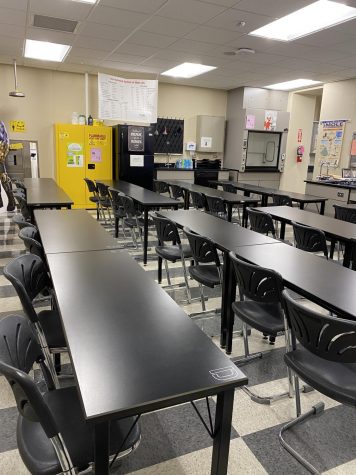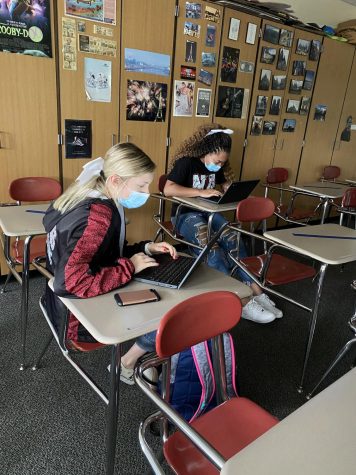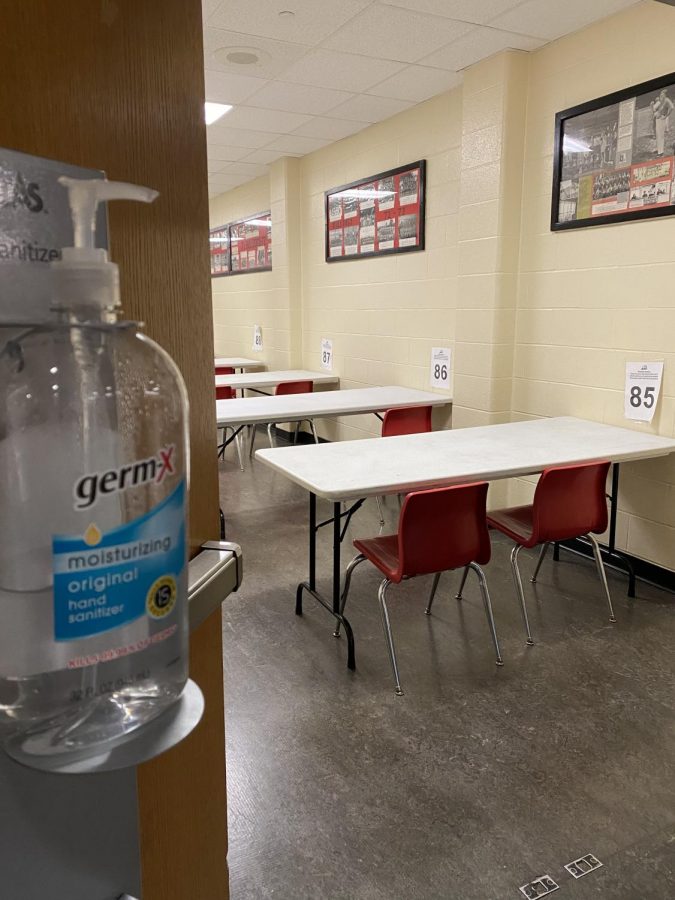New Year & Unique Fears
2020-2021 started amidst a pandemic with new challenges
September 17, 2020
The 2020-21 school year is just beginning in a different way than previous years, with many changes, both related and unrelated to COVID-19.
A/B Schedule
At the July 23 School Board meeting, it was announced grades 7-12 would go to a hybrid schedule. Grades K-7 and Prosser will attend school four days. NAFCS isn’t alone in this, with many schools in Central Indiana, such as Noblesville and Carmel doing something similar, according to the IndyStar.
“I wish we were in a place where all kids could come every day, for those that chose to,” principal Dr. Michelle Ginkins said. “Yesterday I was in a class with three or four in-person kids, I think the teacher was doing a very good job of including the kids who are virtual, and asking them questions. I think the teacher was doing a really good job trying to balance, so it still felt like they were all together for the lesson.”
Students are slightly unfavorable about the hybrid schedule; 55% of 67 students polled said they don’t like the change.
“They say they’re running in-person school for social interaction, but there is none,” senior Isaiah Stone said. “It’s quiet. You go on your iPad or Chromebook and that’s about it.”
The hybrid schedule allows for more room in the halls, and cafeterias, and most noticeably, the classrooms.
“I don’t mind having smaller classes,” sophomore Nick Price said. “It can make people feel more comfortable and makes the learning environment more personal.”

Classrooms have fewer students, allowing teachers to skip desk, better social distance students. All teachers are also required to turn in seating charts. Chemistry teacher Clark Mumaw had tables clusters last year, which have become rows.
“I don’t like it [arranged] this way at all,” Mumaw said. “The desk get messed up easier, the kids have harder times getting through. The rows are small.”
The split schedule will continue until at least fall break.
Masks

This change isn’t NA specific, with Governor Holcomb requiring masks in public for everyone eight and older, or in third grade. NAFCS requires masks for all students, staff, and teachers.
“I think it does give a sense of security, and of being able to stay open,” Ginkins said. “[People feel they’re ] less likely to get it even if someone else has it. Right now, I think it’s appropriate.”
Some students are embracing the masks, and viewing it as a fashion accessory.
“I use my mask as a way to add patterns or more color to an outfit,” junior Abby Byrnes said. “I love to match my shoes and shirts everyday and now I can add my mask to that list.”
Cafeteria

Another very noticeable change is in the cafeteria. Tables have been added to the locker room hallway, and in both the cafeteria and that hall, each table is limited to three people. Students were assigned tables based on their fourth period, and on their first day, the student selects their seat for the near future. After dining, students turn their chair around to indicate the table is in need of cleaning.
“That is from the health department,” Ginkins said. ‘They came in and met with us, told us how many seats per table, have them face the same way. They went to each section with us. Honestly I can’t predict [how long it will last] at all, it will all be based on the state and health department.”
Prince has mixed feelings about the cafeteria.
“It’s not great because it limits [those] who have trouble being outgoing and can make them uncomfortable,” Prince said. “Health-wise, I’m glad to see the school is taking lunch time seriously, especially since we take our mask off.”
Advisory
To better social distance in the cafeteria, an additional lunch time was added, shortening each class by five minutes, except fourth period which gained 30 minutes. This extra 30 minutes is used for “advisory” which serves like a homeroom and study hall.
“I think it has the potential to be because instead of progress monitoring every three weeks,” Ginkins said. “Students have a daily set amount of time that they should form a habit of checking the announcements, checking grades, emailing and talking to my teachers if they have an issue with something.”
Last year, homeroom was done about twice a month, and students would go to a teacher assigned based on their last names.
“I feel like our advisory period is more helpful than homeroom,” Prince said. “Advisory period is like a study hall and gives everyone the chance to get done what they need to get done.”
Color Coded Hall Passes
Unrelated to COVID-19, each floor now has a different colored hall pass.
“[It still helps] with the intention to remind students that you need to go efficiently to wherever you’re sent,” Ginkins said. “You don’t need to go to extra places because if you say you’re in the restroom and you have a pass from a different color floor, you’re not being efficient and we want to maximize learning , assure your success, without having the reusable piece.”
The first floor is grey, the second is white, and the third floor is red.
Temperature Checks
Another change has random students selected to get their temperature checked.
Junior Cole Johnson was selected on the first day of school.
“They sent some kid to my class with a pass that just said to the office,” Johnson said. “I went to my counselor. She was the one who said it was for a temperature check. I was confused why I was there, I think they can do a better job with telling the students why they got a pass.”
Virtual Learning
Virtual school being used for COVID-19 opens the door for DSL (digital synchronous learning) to be used on other occasions. Most notable is in the form of snow days. While as little as an inch of snow would once have students out of school, students this year will be able to learn safely from their home, without the makeup day.
No Lockers
A change that doesn’t have quite the effect on students at NA is the elimination of locker use. This change comes from the school board policy, with the goal of preventing congregating in the halls.


